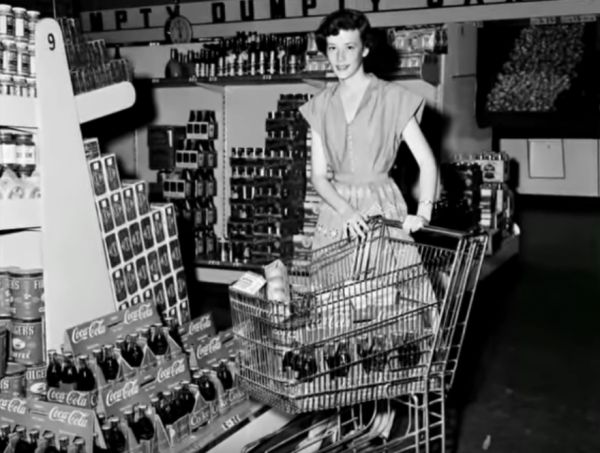A
century ago, grocery shopping in America was very different from the
way that it is now. Customers approached clerks who worked behind
counters and asked for specific items. The clerks measured out the
desired goods, then handed them to the customers, who placed them in
handbaskets.
This necessarily created a
limit on how much money a customer could spend because he could carry
only as much as he could hold in a basket.
Late
one night, Sylvan Goldman, a grocer in Oklahoma, suddenly had an idea
for a solution: what if you stacked two baskets on top of each other and
put them on wheels?
Goldman built a
dozen carts and placed them in his grocery stores. They were, though
practical, not popular. Women protested that they already had enough of
pushing carts--that is, baby carriages--around. Men took the idea that
they needed help carrying heavy loads as an affront to their
masculinity.
Goldman found a solution:
he hired attractive-looking actors to walk around his stores with
shopping carts. This made using them socially acceptable. Zachary
Crockett explains at Priceonomics, where he traces the history of this invention:
Finally, Goldman enlisted his own employees (and hired a team of actors — both men and women) to push the carts through his stores with beaming smiles, picking items off shelves with ease. Before long, herd mentality took hold: shoppers gradually began to accept and cherish the cart.
Once his stores were thriving with merry cart-pushers, Goldman filmed his success and showed it to other grocers. Soon, the carts were in high demand: Goldman sold them for $7 each, and quickly amassed a two year backorder.
Goldman and other inventors refined the
shopping cart design to include telescoping baskets that fit within each
other, thus saving space. The shopping cart became ubiquitous across
the country and the world. Eventually, it became literally iconic of
consumerism:


No comments:
Post a Comment